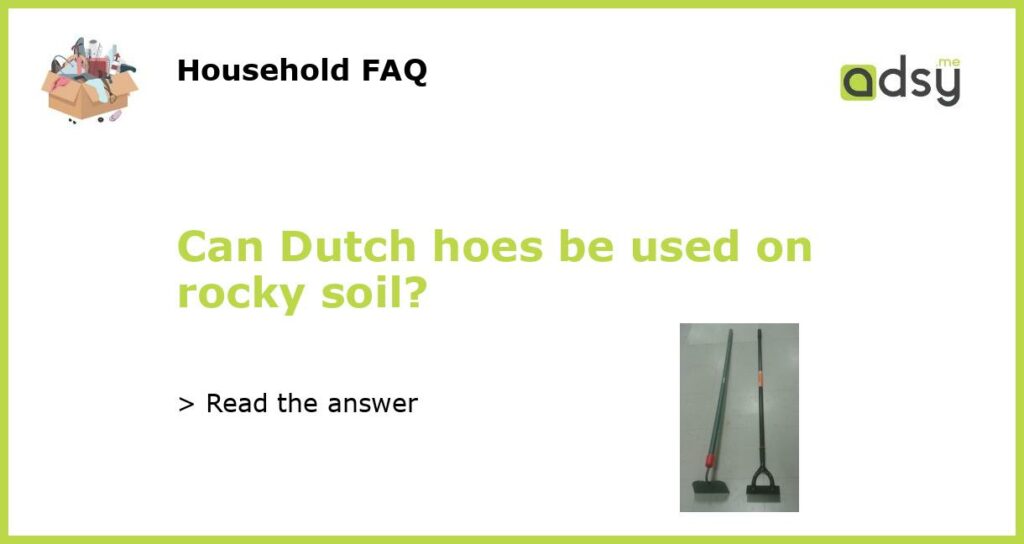Understanding the Dutch hoe
The Dutch hoe is a gardening tool that is designed to make weeding easy and painless. The long handle makes it possible to weed without having to bend over, which can save your back. The sharp blade is designed to cut weeds at the surface level, which prevents regrowth. The Dutch hoe is an effective tool for weeding large planting beds and gardens, but can it be used on rocky soil?
The pros and cons of using a Dutch hoe on rocky soil
The Dutch hoe is most effective on soil that is soft and free of rocks. The sharp blade is designed to cut through weeds, not rocks. Attempting to use a Dutch hoe on rocky soil can damage the blade, making it less effective at weeding. However, there are some pros to using a Dutch hoe on rocky soil. It can still be used to remove weeds that are growing between rocks and in small crevices.
Alternatives to using a Dutch hoe on rocky soil
If you have rocky soil, there are alternative tools that are better suited to the task. A hand-held hoe with a smaller blade can be used to weed between rocks and in tight spaces. A garden cultivator can also be used to break up soil and remove weeds in rocky areas.
Considerations when using a Dutch hoe
When using a Dutch hoe, it is important to wear protective gear, such as gloves and safety glasses. The sharp blade is designed to cut through weeds, but it can also cut through skin. It is also important to use the Dutch hoe correctly. The blade should be kept at a low angle and should be pushed just below the surface of the soil. Using the Dutch hoe too aggressively can damage the blade and make it less effective at weeding.
The bottom line
The Dutch hoe is a versatile gardening tool that can make weeding easy and efficient. While it is not designed for use on rocky soil, it can still be used to remove weeds between rocks and in small crevices. If you have rocky soil, alternative tools such as a hand-held hoe or garden cultivator may be a better option. Regardless of the tool you use, it is important to wear protective gear and use it correctly to avoid injury and maximize effectiveness.






